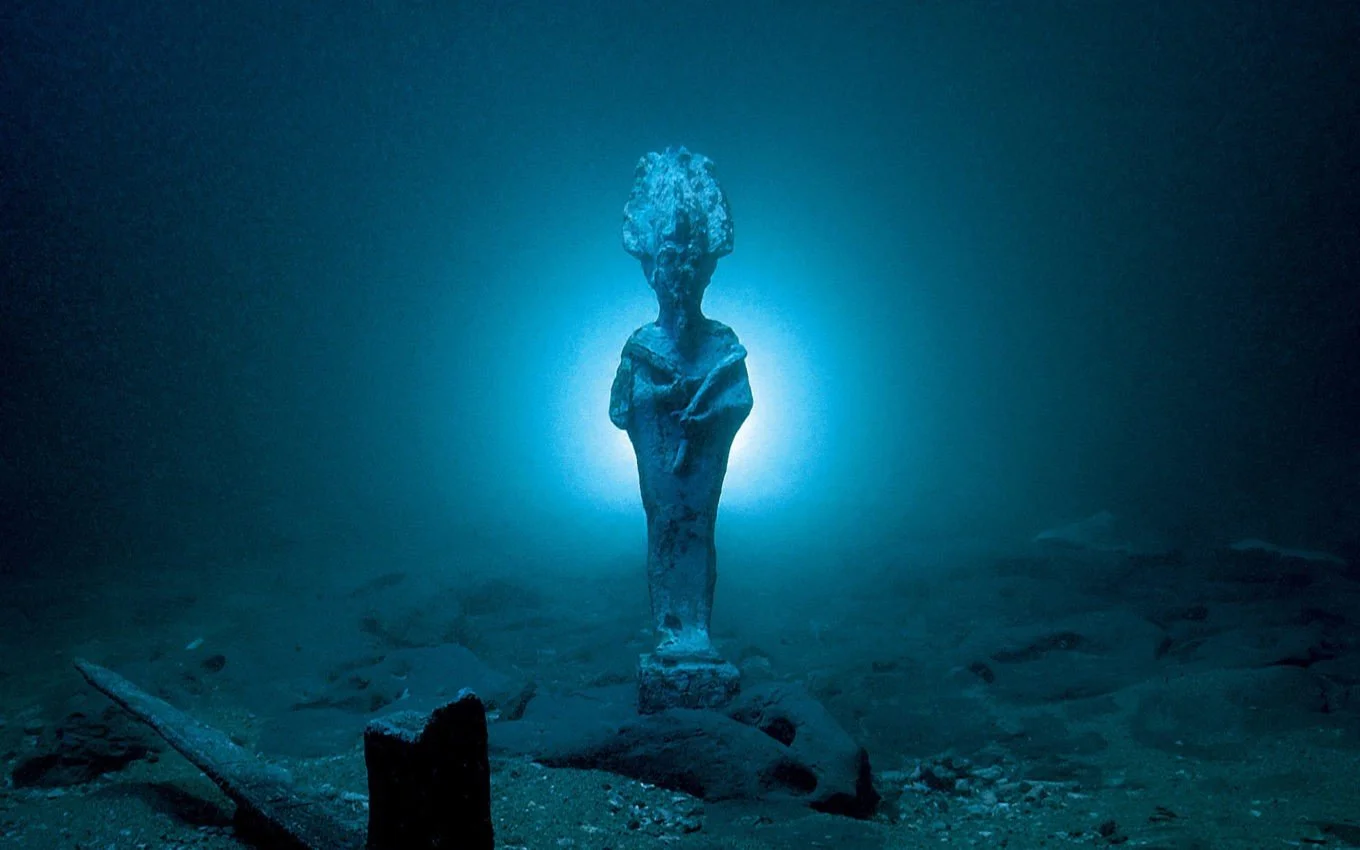Drowned Heritage: The Sunken Cities of Abukir Bay
Kenzy Fahmy
Just off the coast of Alexandria, beneath the Mediterranean waters, lie the remnants of two ancient cities, along with their gods, their stories and their secrets. The port towns of Heracleion and Canopus had been hidden from the world for over two thousand years, lost to the hungry sea, until their rediscovery less than a century ago. Now, they form the eerily silent setting for one of the world’s most unique museums.
In 1933, a Royal Air Force pilot flying over Alexandria caught sight of what looked like archaeological remains around 2km off the coast of the city, right where the Nile meets the sea. The pilot reached out to Prince Omar Toussoun, grandson of Mohamed Said Pacha and a passionate archaeologist and historian. The prince enlisted the help of divers and local fisherman, and together they were able to locate and recover some of the submerged fragments, including a statue of Alexander the Great, of what would later be identified as the city of Canopus.
The turn of the millennium would bring with it another great discovery, this time by French underwater archaeologist, Franck Goddio, and the European Institute for Underwater Archaeology. About 7km in from Abukir Bay, Goddio discovered the remains of the city of Heracleion, or Thonis as it was known to the ancient Egyptians. This wasn’t his first discovery here either; in the 1990s, he had also led the excavations of Antirhodos, another ancient port city lost to the depths of the sea.
Before its discovery in 2000, Thonis-Heracleion had all but been erased from the history books, with only traces of its existence being found in a small number of ancient texts and inscriptions. Herodotus wrote of a temple built in honor of the great Greek hero, Heracles, to mark his first steps on Egyptian land. He wrote also of Helen and her lover Paris visiting the city before the start of the Trojan War. The ill-fated couple was seeking refuge from a raging Menelaus but were refused by Thonis, the Egyptian guardian of the Nile’s entrance and the original namesake of the city; the Greeks would later name it Heracleion, after their demi-god champion.
A few kilometers to the west of Thonis stood Canopus, which, along with Thonis, acted as Egypt’s main port until the position was handed over to a newly founded Alexandria. Legend has it that the town was named after the pilot of Menelaus’ ship during the Trojan War; the pilot died of a snake bite and in his honor, the Spartan king erected a monument around which the city was built.
The god Osiris was worshipped here, along with Serapis, a Greco-Egyptian sun deity. Every year, a special procession would carry the Egyptian god of the underworld on his ritual barge from Thonis to his home in Canopus, connecting the two cities on a divine level. Canopus was not just a sanctuary for Osiris and his worshippers though. By the time the Roman Empire was in full swing, the city had developed a reputation for decadence and debauchery, a reputation which both condemned the city and attracted visitors from far and wide, including Emperor Hadrian who enjoyed his time there so much that he had a villa built to the style of the extravagant Mediterranean port.
But the presence of the two cities would be short-lived, and, while we don’t know exactly when they were founded, we do know that their demise came around the 2nd century BCE. A series of earthquakes and rising sea levels weakened the foundations of the two cities until a severe flood liquefied the hard clay soil that they were built upon, causing most of the infrastructure to collapse and drown. What was left eventually became the modern coastal town of Abukir.
Experienced divers can now explore the drowned cities in a one-of-a-kind underwater museum, swimming through fragments of limestone temples and granite statues that offer a glimpse into what the cities looked like more than two thousand years ago. Many artifacts have been removed of course, either to be placed in museums around the world or to be included in traveling exhibitions, of which there are many.
New discoveries are still being made, now easier than ever thanks to modern sonar and imaging technology. Every day we unearth, or pull from depths, more and more pieces of the infinite puzzle that is our history. Even with the sheer amount of discoveries that have already been made, much of our ancient heritage still lies buried beneath sand or sea, waiting to be found, or perhaps, hoping to stay hidden.



